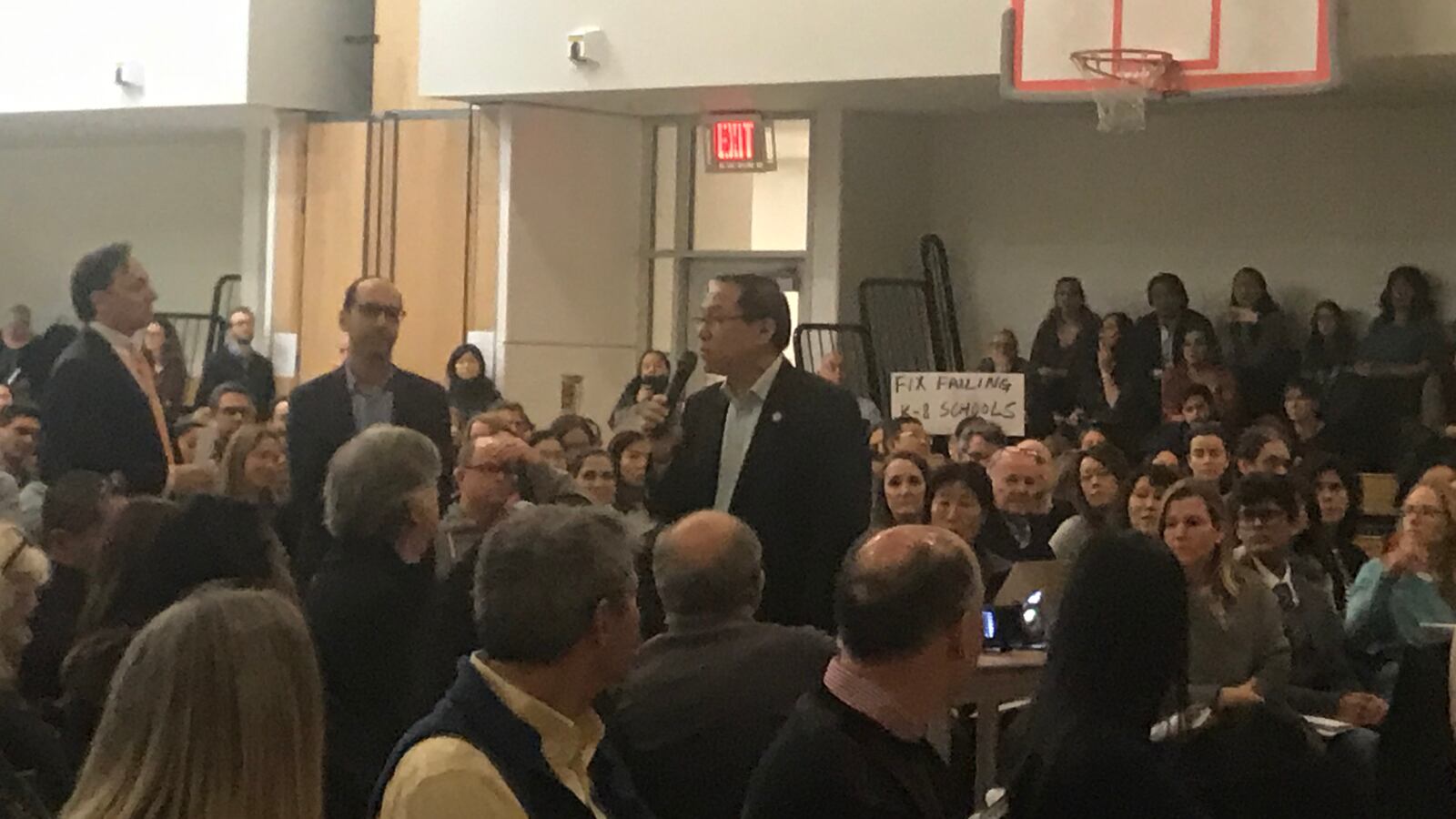A Manhattan parents meeting earlier this month turned raucous as parents protested the city’s plan to integrate the eight most elite high schools by scrapping the admissions test. Now, a group of parents from the same district are voicing strong support for the plan.
Seventy-seven parents from District 2 sent a letter Wednesday to the Community Education Council, state lawmakers, and City Council members supporting Mayor Bill de Blasio’s proposal, which would grant admission to the schools to the top 7 percent of middle schoolers using metrics such as GPA and state test scores.
Specifically, the letter writers oppose a resolution that some CEC members introduced the night of the meeting, which was sharply critical of de Blasio’s proposal and asked the city education department to pull its support to allow more community engagement. The resolution didn’t pass after a 5-5 tie vote.
“Any conversation about the SHSAT and New York City’s Specialized High Schools must begin by recognizing (as the CEC’s resolution notably does not recognize) that New York has some of the most racially segregated public schools in the United States,” the parents’ letter says.
The letter notes some of the common defenses for de Blasio’s plan, such as low-income families not having the resources to prepare their children for the high-stakes admissions exam. It also says that schools are so segregated, they are effectively part of an “apartheid system” and blames school-choice policies on contributing to segregation.
“While the CEC’s resolution raises some important questions (for example, about how the loss of honors programs contributed to a fall in SHS diversity in the 1990s), for the most part it draws on a series of arguments that conservatives have long used against efforts to improve racial justice and diversity in school admissions—for example, the contention that Black and Latinx students simply won’t be able to “perform” at the Specialized High Schools if they didn’t score within the few top percentage points of the SHSAT,” the letter says.
De Blasio’s plan has caused a firestorm of controversy across the city. Supporters note that black or Hispanic students make up 10 percent of the enrollment at the city’s specialized high schools but represent almost 70 percent of students citywide.
Families who oppose his plan — many of them white and Asian — argue that the SHSAT is race blind and is the fairest way to preserve the elite status of these schools. Asian-American parents and community advocates filed a federal lawsuit last week seeking to halt part of de Blasio’s plan.Asian students make up 62 percent of the student bodies at specialized high schools, while they make up 16 percent of city schools as a whole.
District 2, which stretches from the Upper East Side and through Soho to Tribeca, enrolls 8 percent of the city’s eighth graders but accounts for almost 13 percent of admissions to specialized high schools.
Some opponents acknowledge how segregated the system is but say they prefer a solution that better prepares students in elementary and middle school, so that they’re ready to take the exam when it’s time.
The admissions test is mandated by state law, so state lawmakers must approve any changes. It’s still unclear how the issue will shake out when the 2019 session starts in January because support of the proposal doesn’t fall neatly along party lines.
Democratic State Sen.-elect John Liu, a longtime city politician, who will head up the New York City subcommittee on education, is opposed to de Blasio’s plan but plans on a “comprehensive” discussion and hearings over the issue.
“We were concerned that the initial pushback from the CEC and parents might scare legislators away from voting for bold initiatives to desegregate our schools,” said Anne Hager, one of the parents who signed the letter, in an email to Chalkbeat. “The hope is that hearing support for these initiatives from constituents will remove some of that fear of backlash. It’s so important for those of us in more affluent and largely white districts to be vocal about the unfairness of the current situation, even though many of us benefit from the inequity.”
Read the letter below.

